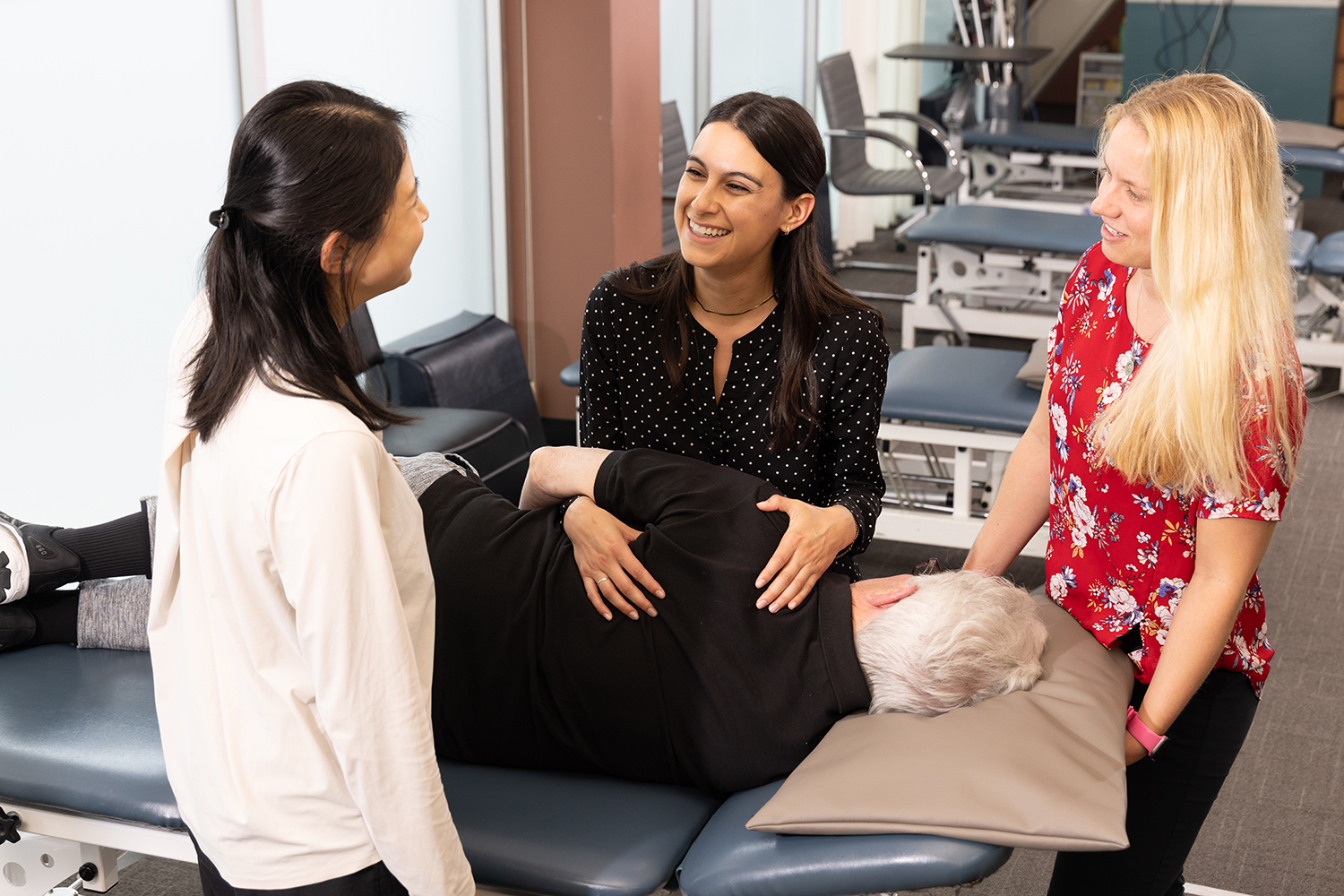02.27.2024
By uscbknpt
A Pipeline of Compassion

USC’s newly accredited Oncology Physical Therapy Residency Program aims to increase care for cancer patients.
BY MICHELLE McCARTHY
AS OF JUNE 2023, ONLY 183 INDIVIDUALS HAD ACHIEVED board certification as clinical specialists in oncology physical therapy. USC is aiming to change that with its Oncology Physical Therapy Residency Program, which was officially accredited by the American Board of Physical Therapy Residency and Fellowship Education (ABPTRFE) in early 2024. Studies have shown that when cancer patients are active, their recovery outcomes are more positive.
“Our goal is to increase the number of oncology physical therapists so we can help this patient popula-tion before, during, and after their cancer treatments,” says Kimiko Yamada, director of the oncology physical therapy residency and associate professor of clinical physical therapy.
ABPTRFE accreditation is a reliable indicator of the value and quality of a residency program. “What this accreditation means is that our residents are coming through a program that has been rigorously assessed,” says Minnie Jan, assistant professor of clinical physical therapy. “The ABPTRFE looked at our curriculum and our protocols and made sure we were fulfilling the required standards. We hit all the marks and are providing top-of-the-line education for these residents. It’s a really big milestone for our program.”
The USC Division of Biokinesiology and Physical Therapy now has five accredited residencies and three accredited fellowships — a generous serving of specialty practice programs. “We are now one of only six accredited oncology physical therapy programs in the nation that are accredited,” Yamada explains.
GROWING THE ONCOLOGY PHYSICAL THERAPY PRACTICE
The 12-month Oncology Physical Therapy Residency Program incorporates hands-on experience, dedicated mentoring, oncology curriculum, classroom teaching and opportunities for research. To date, two students have graduated from the oncology program, while two more will graduate in August 2024.
“Hopefully this program will serve as a pipeline,” Yamada says. “We’ll be able to increase the number of skilled oncology physical therapists so cancer survivors can get the best care possible. If we are able to hire our residents, we can also possibly grow our conology practice”
Lydia In, assistant professor of clinical physical therapy, says the oncology physical therapy popula-tion is a special group. “You have to be aware of the whole picture — the orthopedic side, the neurological side, the cardiopulmonary side etc. That’s what I love about working with these patients, because it’s a mixture of a little bit of everything.”
Currently, the referrals that the USC team treats are mostly from breast, head and neck cancer patients, but Jan says that any cancer patient at any point in their journey could benefit from receiving physical therapy, “whether it’s just being diagnosed to during their treatment, to after treatment, and even end-of-life care.”
While some physical therapists may be apprehensive about working with cancer patients, Yamada says that it makes for an incredibly rewarding experience. “They’re the most grateful patients and a joy to work with,” she shares. “You get to help someone through one of the toughest times of their lives.”
Achieving accreditation for the Oncology Physical Therapy Program was not without its challenges. “It’s a long process,” Yamada admits. But USC’s existing network of resources and relationships proved helpful when navigating any issues. “There was a great opportunity to do it here because we’re affiliat-ed with USC Norris Comprehensive Cancer Center, so there is a great oncology team that can share information about different cancers, surgeries, chemotherapies and radiation therapies,” she says. “Within our physical therapy program, we also have strong existing physical therapy residency and fellowship programs that we can share resources with.”

